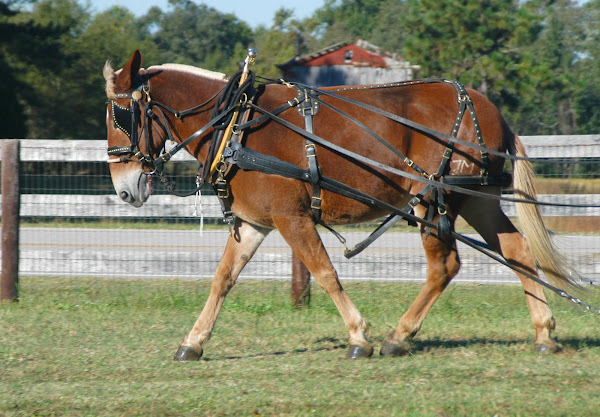 Earlier this year Dr. Korinn Saker from NCSU College of Veterinary Medicine did an Nutrition Work-Up on Chester, to try to help with his hoof problems. She asked me if she could bring some visiting students over this summer to do a farm visit and work up my herd for the benefit of the students. Of course I said yes!
Earlier this year Dr. Korinn Saker from NCSU College of Veterinary Medicine did an Nutrition Work-Up on Chester, to try to help with his hoof problems. She asked me if she could bring some visiting students over this summer to do a farm visit and work up my herd for the benefit of the students. Of course I said yes! So Monday Dr. Saker (In the middle) and Vet Students Teaha Chestnut (Right) from Kansas State and Pinky Andrews (Left) from St. Mathews came over. I had the mules and donkeys lined up on the fence in the front yard. Of course is was another hot day and under the big oak tree is the coolest place on my farm.
They began with Seven, taking his vital signs and measuring him for height and weight. They then examined teeth and looked at body fat. Which there is plenty of right now on all my guys!
They asked lots of question about what I feed, how I feed and what I use Seven for. Then they moved to Sadie, Navarre and finally Chester. Much discussion of Chester's hoof problems, diet and we also determined that the weight tape seemed to read a little lower weight than what Chester actually weights. We think this is because of a donkey's longer and more lanky build than that of a horse or mule.
Then we looked at my feed room and got the feed tags off the bags. Then Dr. Saker showed them how to take a core hay sample. The two students then learned how to take forage samples in my pasture and collected a bag to take back and have tested.
We did a lot of talking about the differences between mules, donkeys and horses.
I had a riddle for them. "Seven has something on his body that Sadie does not."
It took them a little while but they finally realized that she, like the donkeys, doesn't have chestnuts on her rear legs. It is true with the hybrid mule that not everything comes out the same way every time!
Thanks Dr. Saker, can't wait to see the results!


1 comment:
Oh, Shannon, what a great experience for you and the vet students! I'm always looking at my horse children and trying to decide whether they are the right size and whether I should change their feed.
We have a new dog so we're back to three again. He's a Welsh Terrier, sort of a miniature Airedale -- another rescue dog. We have the rescued Airedale and Corgi; our dog family is now complete.
Trish Mandes
Post a Comment